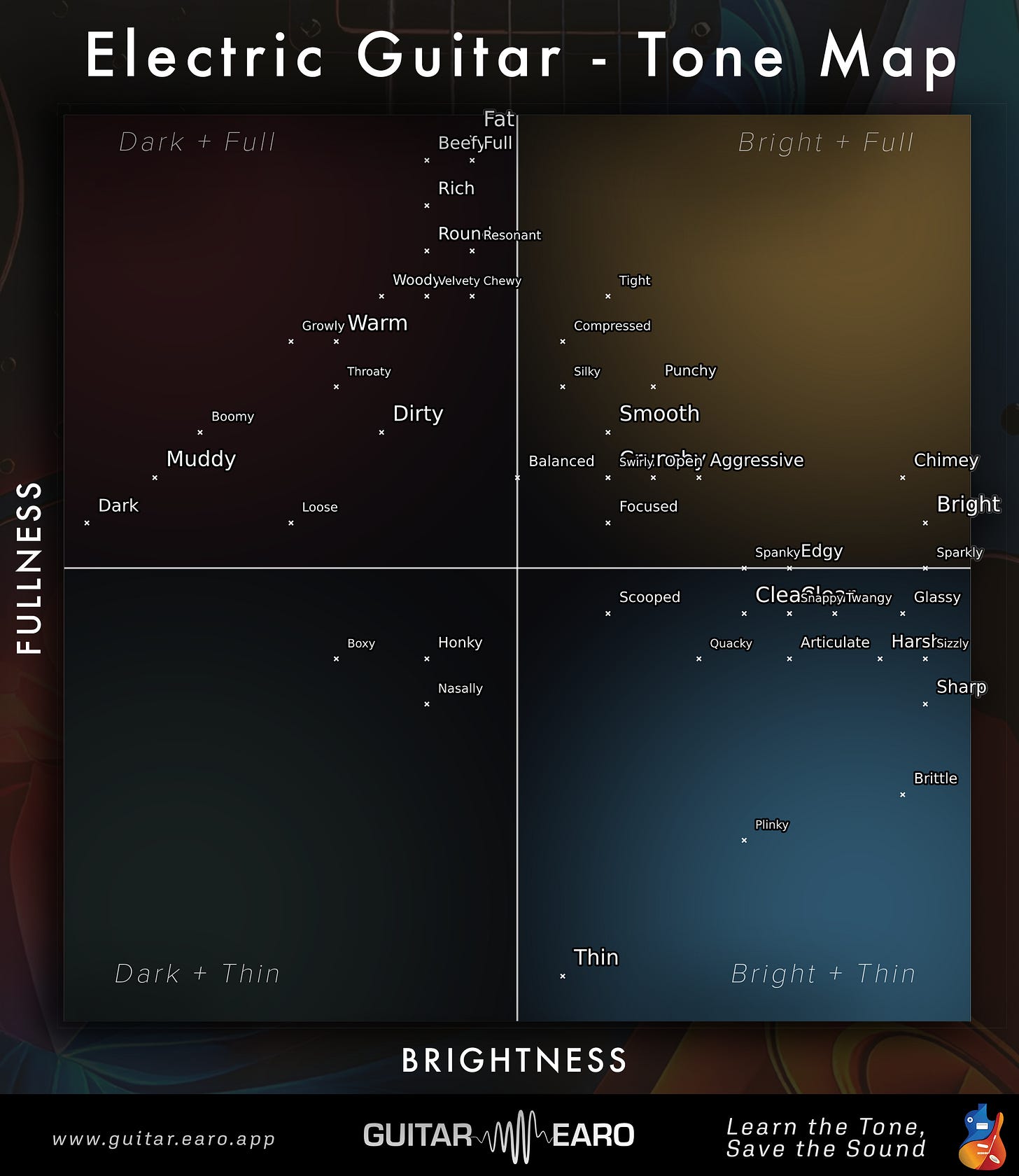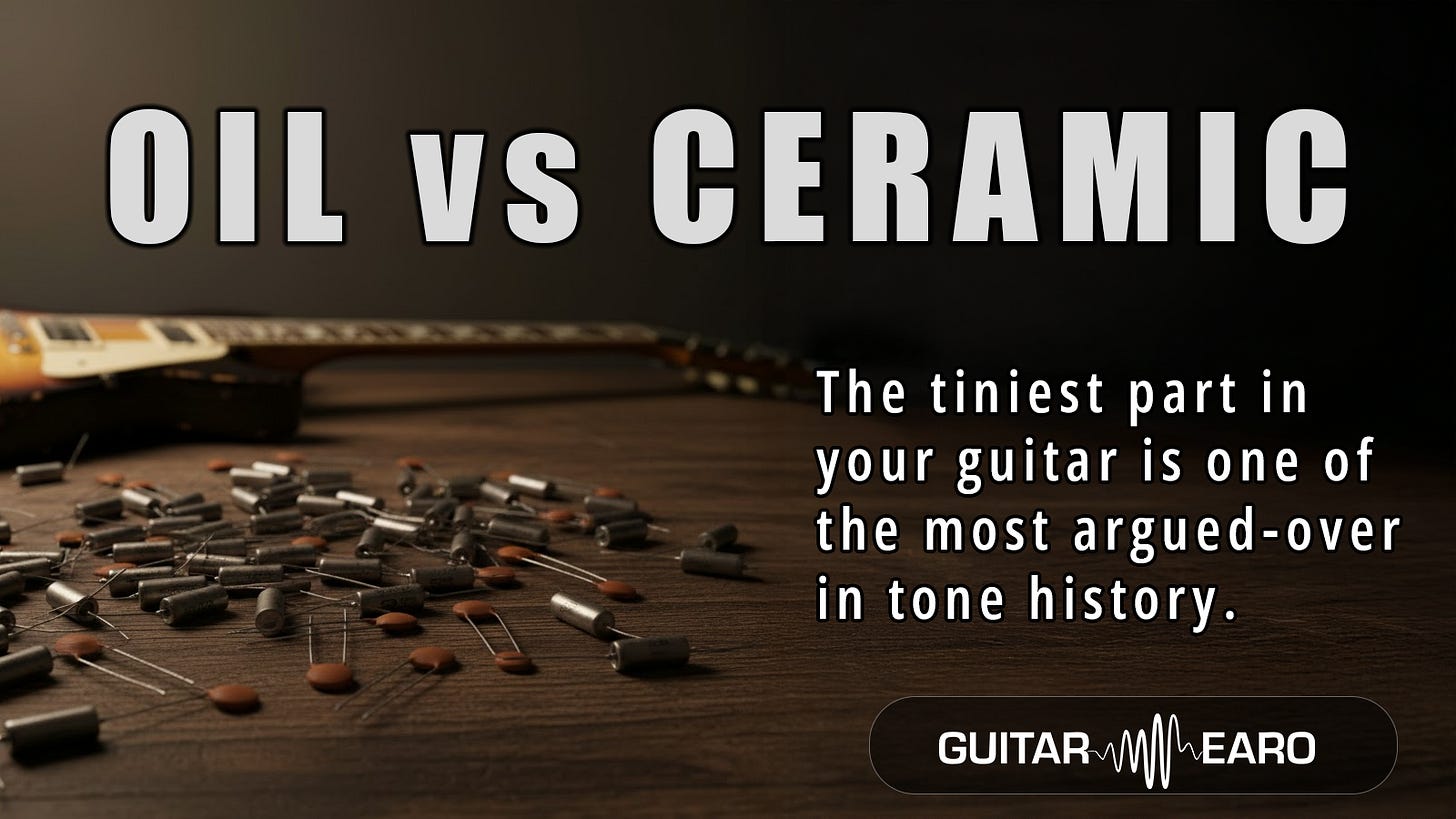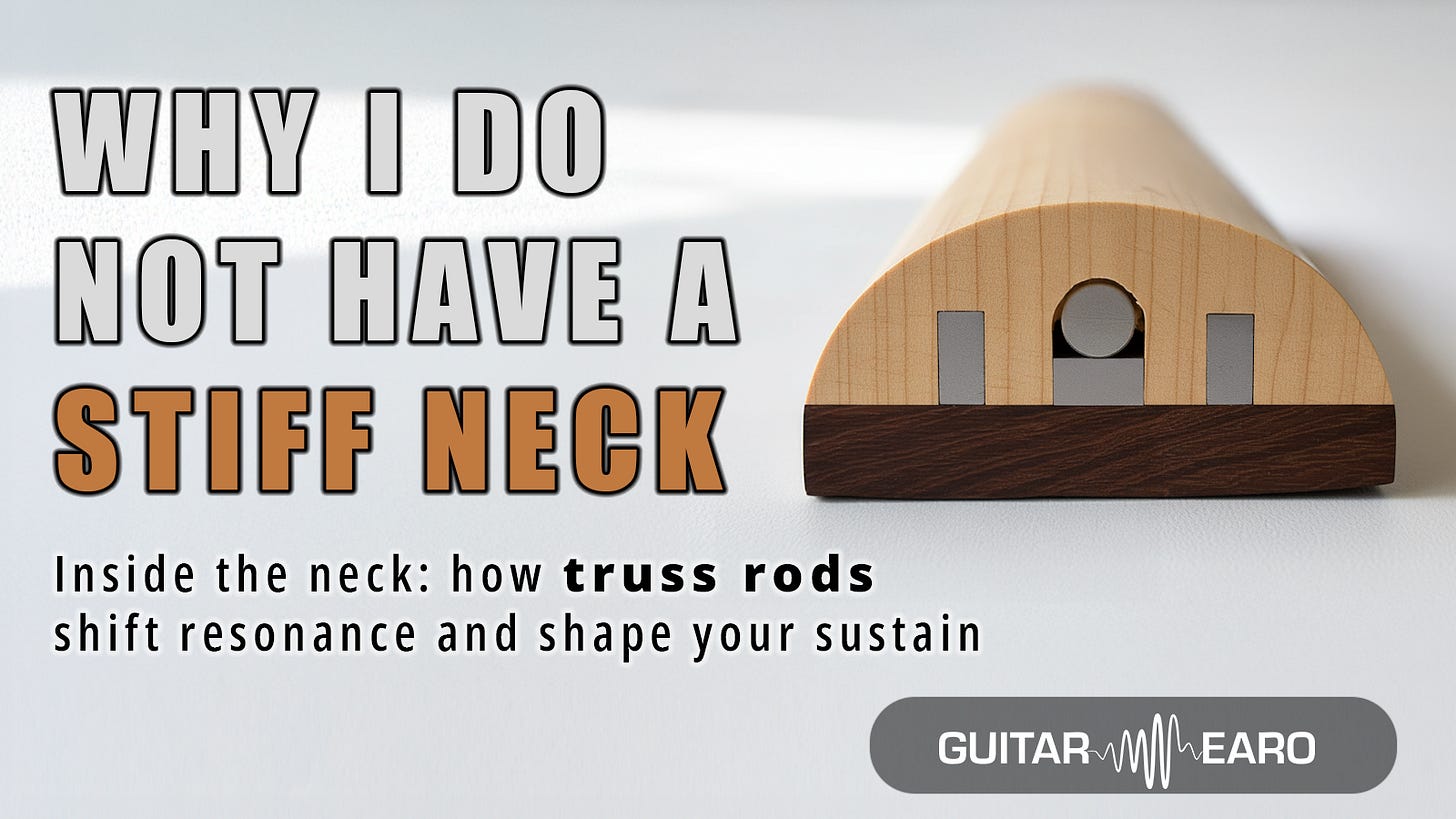Every guitarist says, “I know my tone.”
But what if you could point to it on a map?
That’s the idea behind the Electric Guitar Tone Map, a way to translate subjective language (“beefy,” “scooped,” “muddy,” “spanky”) into a two-dimensional tonal space.
Why a Tone Map?
When guitarists talk about tone, we’re really trying to describe spectral balance and perceived body. Yet language is messy: one person’s warm is another person’s muddy.
By placing tone words on a 2D coordinate system, we can make the conversation precise:
X-axis = Bright ↔ Dark
Treble vs. bass emphasis, pickup placement, and string choice all live here.
Y-axis = Full ↔ Thin
The sense of body or weight in the tone, shaped by mid/low-mid energy.
Together, these axes cover the core timbral fingerprint of an electric guitar in its clean, direct form (no amp, no pedals).
From Words to Dimensions
The process started with a vocabulary sweep of guitar forums, reviews, and magazines. Terms like warm, muddy, fat, brittle, spanky, scooped recur constantly.
We then identified perceptual opposites (e.g. bright vs. dark, thin vs. full), and clustered the rest into this 2D space.
Examples:
Top-left (Dark + Full): Fat, Growly, Woody
Bottom-right (Bright + Thin): Sharp, Glassy, Brittle
Center: Balanced, Smooth, Focused
Suddenly, every tone word has coordinates.
Technical Underpinnings
Underneath the design is a framework grounded in psychoacoustics and audio DSP:
Brightness (X-axis): closely correlated with spectral centroid and high-frequency tilt.
Fullness (Y-axis): approximated by low-mid energy concentration, and absence of notch-filtered “scooped” mids.
Clarity vs. Mud: emerges naturally within this 2D map, where words overlap as secondary descriptors.
This approach is deliberately simplified to two axes. A full psychoacoustic model of timbre is multi-dimensional (sharpness, roughness, attack time, spectral flux), but Brightness and Fullness capture the essential fingerprint of a guitar’s identity without drowning players in complexity.
What It Reveals
A Strat bridge pickup sits firmly in Bright + Thin: glassy, biting, articulate.
A Les Paul neck humbucker is Dark + Full: warm, fat, sometimes muddy.
A Telecaster middle position leans toward the center: balanced, open, spanky.
By plotting instruments this way, we can compare them objectively, teach ear-training, and even track how tone words cluster culturally (e.g. vintage vs. modern descriptors).
Where It Gets Spicy
Which tonal zone is the most overrated?
Is Muddy ever musical?
Is Scooped just nu-metal nostalgia?
Or is Balanced the polite middle ground nobody really loves?
Beyond Words: Toward Fingerprints
Every guitar has a tone fingerprint, a measurable, reproducible identity. Most players never learn to hear it. Once you do, you can’t un-hear it.
That’s what we’re building at Guitar Earo:
A system to train your ears to recognize guitars by tone.
A library that saves the sound of iconic instruments.
A map that translates subjective language into objective data.
👉 Want to be first in line as we roll this out?



